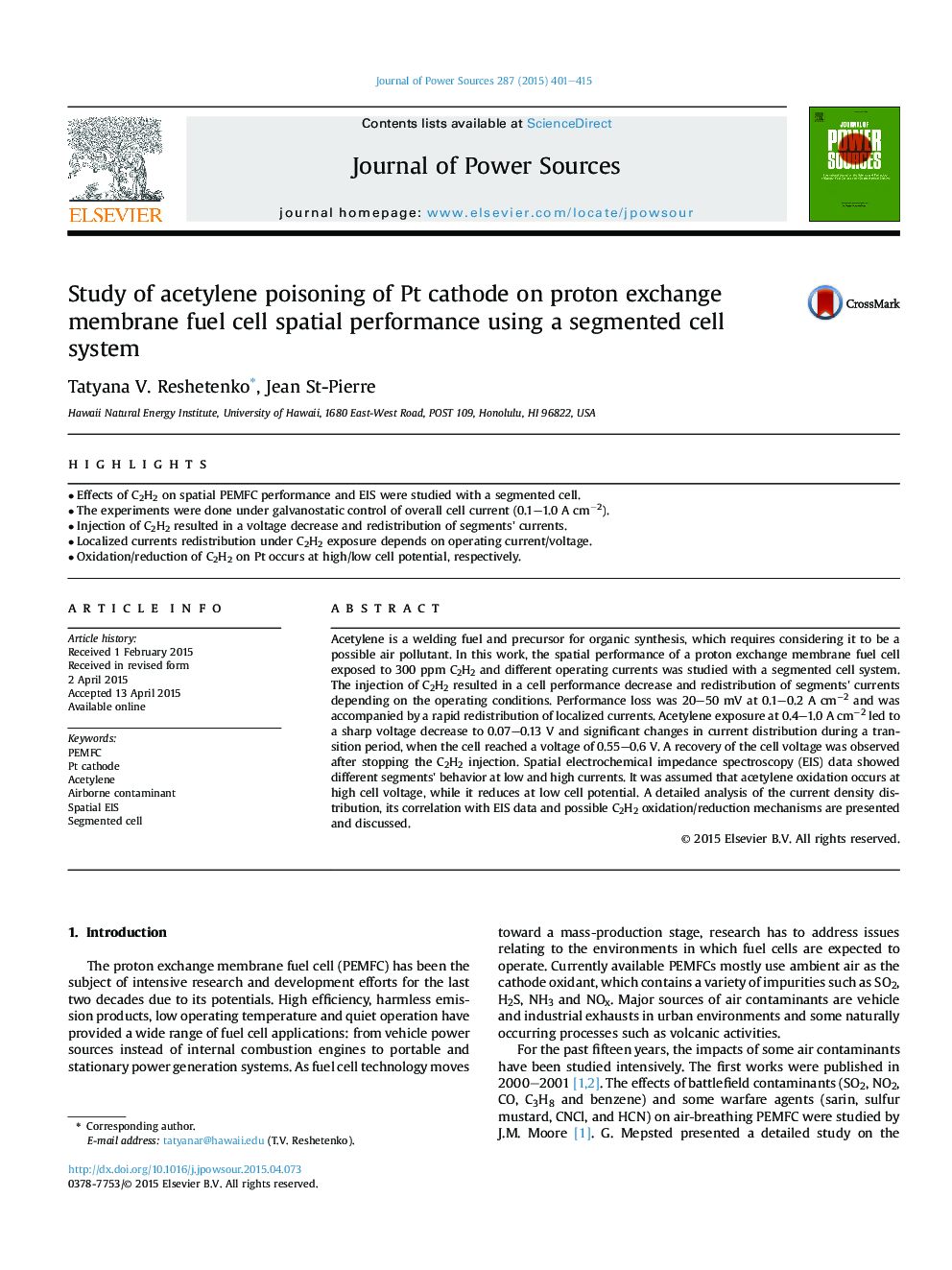| Article ID | Journal | Published Year | Pages | File Type |
|---|---|---|---|---|
| 7732035 | Journal of Power Sources | 2015 | 15 Pages |
Abstract
Acetylene is a welding fuel and precursor for organic synthesis, which requires considering it to be a possible air pollutant. In this work, the spatial performance of a proton exchange membrane fuel cell exposed to 300Â ppm C2H2 and different operating currents was studied with a segmented cell system. The injection of C2H2 resulted in a cell performance decrease and redistribution of segments' currents depending on the operating conditions. Performance loss was 20-50Â mV at 0.1-0.2Â AÂ cmâ2 and was accompanied by a rapid redistribution of localized currents. Acetylene exposure at 0.4-1.0Â AÂ cmâ2 led to a sharp voltage decrease to 0.07-0.13Â V and significant changes in current distribution during a transition period, when the cell reached a voltage of 0.55-0.6Â V. A recovery of the cell voltage was observed after stopping the C2H2 injection. Spatial electrochemical impedance spectroscopy (EIS) data showed different segments' behavior at low and high currents. It was assumed that acetylene oxidation occurs at high cell voltage, while it reduces at low cell potential. A detailed analysis of the current density distribution, its correlation with EIS data and possible C2H2 oxidation/reduction mechanisms are presented and discussed.
Related Topics
Physical Sciences and Engineering
Chemistry
Electrochemistry
Authors
Tatyana V. Reshetenko, Jean St-Pierre,
